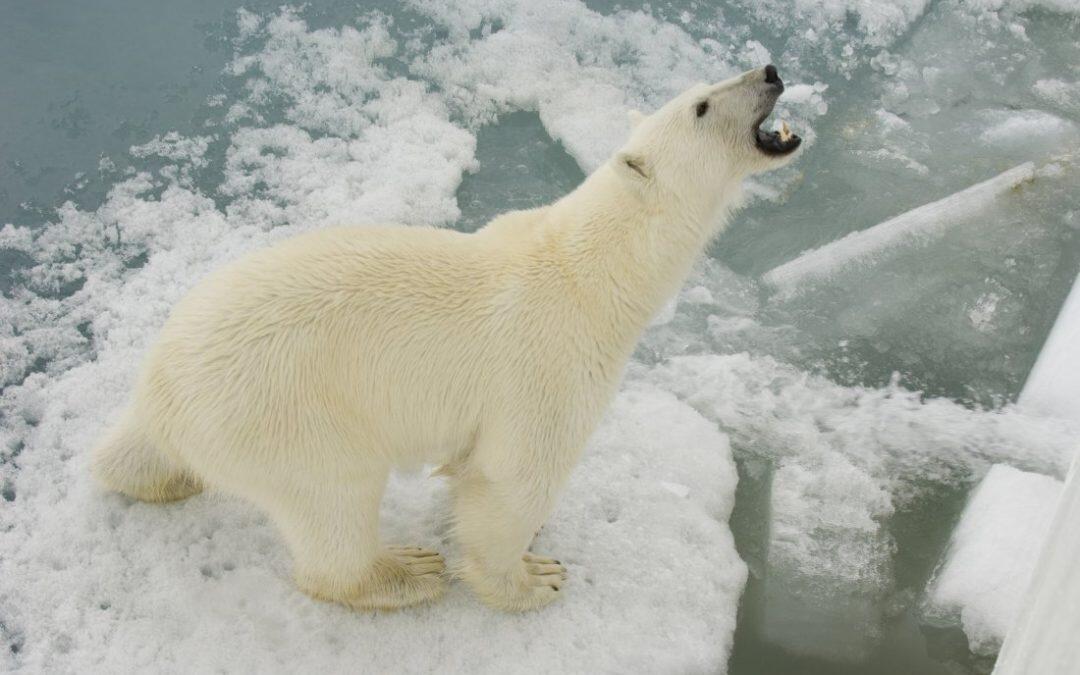Polar bears are among the most affected animals by changes in Arctic sea ice animals because they are based on this surface for essential activities such as hunting, traveling and breeding.
A new study by researchers at University of Washington, in the United States, funded by NASA, has detected a trend toward melting of sea ice earlier in spring and icing later in the fall in the vicinity of 19 populations polar bears, which can negatively affect their ability to feed and play.
The document, which is detailed in an article published Wednesday in The Cryosphere ‘, a journal of the European Geosciences Union, is, according to its authors, the first to quantify the changes of sea ice in different subpopulations bear polar throughout the Arctic region using metrics that are particularly relevant to the biology of the polar bear.
“This study shows the decline of sea ice for all subpopulations of polar bears -HA said co-author Harry Stern, researcher at the Polar Science Center at the University of Washington have used the same metrics across all subpopulations polar bears in the Arctic so that we can compare and contrast, for example, the region of Hudson bay region Baffin bay, using the same metric. ”
The analysis shows that the critical moment of the melting of sea ice and freezing of sea ice are changing in all areas in a direction that is detrimental to polar bears. A total of 19 populations of polar bears live around the Arctic separate, spending their winters and springs itinerant on sea ice and hunting.
Bears have been developed primarily to eat seals, which provide them with fat and nutrients in the hard Arctic environment. But these animals can not swim faster than their prey, so instead settle on the sea ice as if it were a platform and they tend ambushing seals through the breathing holes or breaking the ice to access their warrens.
“Sea ice is really their life platform -HA indicated coauthor Kristin Laidre, also a researcher at the Center for Science polar- Polar bears are capable of living on earth during part of the year, but sea ice is where get their main prey, “explains this expert.
Between 7 and 19 days with less ice per decade
The new study is based on 35 years of satellite data that show the daily concentration of sea ice in the Arctic.Through the 19 populations of polar bears, the authors found that the total number of days covered by ice shrank at a rate of between seven to 19 days per decade between 1979 and 2014. The concentration of sea ice during the summer months , an important measure because summer is when some subpopulations are forced to fast on land, also declined in all regions, between 1 and 9 percent per decade.
The most surprising result, the researchers say, is the constant tendency in all regions of the polar bear to a spring thaw before and a late freeze in the fall. The melting of Arctic sea ice occurs in spring reappears as daylight and temperatures become warmer. In the autumn months, re-accumulate ice sheets again as the temperature drops.
“These transitions between spring and autumn limit the period in which there is a good ice habitat for the bears to feed –ha pointed Laidre– These periods are also linked to the breeding season, when bears are companions and when the females leave their burrows maternity very young puppies and have not eaten for months. ”
The researchers found that, on average, during the spring melt was three to nine days earlier per decade and freezing in the fall occurred between three and nine days later per decade. This corresponds to a more or less than three and a half weeks in both seasons change and a total loss of sea ice good habitat for bears seven weeks in the 35 years of data of Arctic ice.
“We believe that if current trends continue, compared with today, polar bears will experience including six to seven weeks of free periods of ice by mid-century,” warns Stern, noting that the trend appears to be linear and is not accelerating or stabilizing.
The researchers plan to annually update their results as new data have ice cover. The results of the work are currently used by the group of specialists in the Polar Bear International Union for Conservation of Nature, which assesses polar bears and issues the conservation status of the species.











